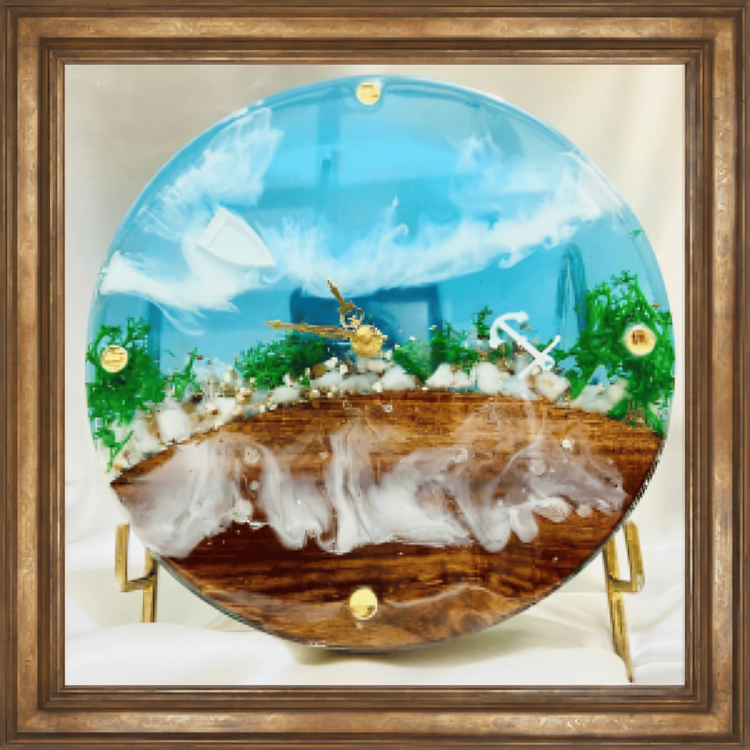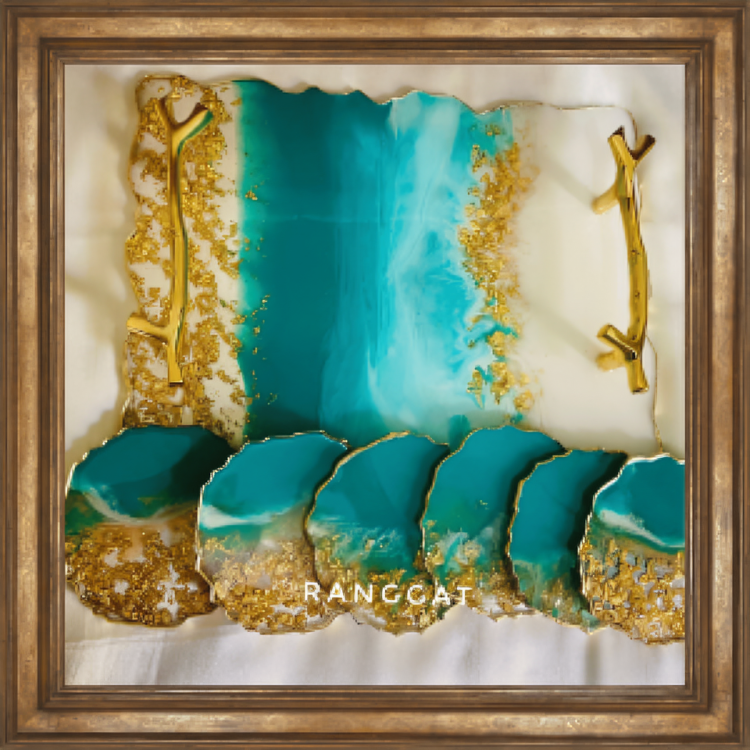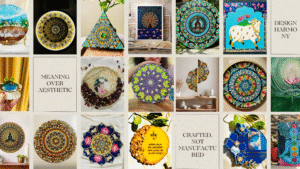If the glossy sheen of an ocean wave captured in a frame, the swirling abstract depths of color placed in a perfect glass-like surface, or even a crystal-clear table adorned with sparkling stones has ever captured you, you have experienced the alluring magic of resin art. I am a mixed-media artist who finds resin to be one of the most fascinating and transformative materials. It changes creativity into real, eternal beauty. A world where science and art coexist is made possible by resin art, whether you are a curious beginner or someone seeking to discover new creative possibilities.
Let us examine the fundamentals of this medium and see why so many creators are falling in love with it.
What Exactly is Resin?
The fundamental component of resin is a two-part mixture of a liquid resin and a hardening agent that, when mixed, undergoes a chemical reaction to generate a solid, glass-like finish. Imagine it as liquid potential, ready to be shaped and poured into a work of art that is only constrained by your creativity. There are virtually limitless options for color, form, and texture with this material. After curing, resin creates a strong, long-lasting, and frequently mesmerizingly shiny appearance.
There are different types of resin, with the most common being epoxy resin. Other forms, like polyester and UV resin, are also popular, each offering unique qualities suited for different applications. For beginners, epoxy resin is generally the best choice because it is less toxic and easier to handle.
Why Artists Love Resin Art
Resin is a symbol of freedom for me. Every creation is an adventure because of its unpredictable flexibility. It enables artists to create multi-layered works that appear to record a moment in time by combining different materials, paints, and even discovered objects. Resin has gained a special place in the creative industry for the following reasons:
1) Versatility: Resin can be used to make sculptures, jewelry, paintings, coasters, furniture, and home decor. The medium provides functional beauty and artistic expression.
2) Incredible Finish: The glossy, glass-like shine that resin offers brings out the textures and colors in artwork, giving it a vibrant, almost otherworldly appearance.
3) Creative Depth: The transparency and layering potential of resin allow for the creation of pieces that have stunning depth and dimension.
4) Durability: Once cured, resin is tough and long-lasting, making your artwork resilient to the tests of time.
5) Experimental Appeal: Every pour can produce surprising outcomes. It is exciting and challenging to watch how resin mixes, flows, and settles.
Tools and Materials to Get Started
Having the appropriate tools is essential when beginning resin art. Here is a brief list of essentials to get your resin journey started:
1) Epoxy Resin Kit: A good-quality resin and hardener are fundamental.
2) Mixing Cups and Stir Sticks: For accurate measurement and blending.
3) Protective Gear: Gloves, a mask, and goggles to protect yourself from fumes and sticky messes.
4) Heat Gun or Butane Torch: To pop any air bubbles trapped in the resin.
5) Molds or Canvas: Depending on whether you’re pouring into a specific shape or working on a flat surface.
6) Pigments and Additives: Alcohol inks, mica powders, glitter, and dyes allow for endless creativity.
The Basic Resin Art Process
Resin art is as much an artistic activity as it is a technical one. Here’s a detailed explanation for beginners:
1) Prepare Your Workspace: Ensure you have a clean, flat, and ventilated space. Lay down protective materials because spills are inevitable.
2) Measure and Mix: Follow the instructions for mixing your resin and hardener – usually in a 1:1 ratio. Stir thoroughly but slowly to avoid creating too many bubbles.
3) Add Color: Mix in pigments, glitter, or any other additives to bring your vision to life. Experiment with blending colors or adding different layers for a unique effect.
4) Pour and Play: Pour the resin onto your canvas or into your mold. This is where the magic happens! Tilt, swirl, or use tools to manipulate the flow.
5) Pop the Bubbles: Use a heat gun or torch to eliminate surface bubbles for that perfect finish.
6) Cure: Let the resin sit undisturbed while it hardens. Depending on the resin, this can take 12–24 hours.
Challenges and Tips for Beginners
There are difficulties in creating resin art. I had a lot of sticky disasters and unwanted bubbles in my early days. The following tips may help you avoid typical pitfalls:
- Patience is Key: Give your resin enough time to fully cure. Rushing the process can lead to soft or sticky surfaces.
- Measure Accurately: Precise ratios are critical for the resin to harden properly.
- Work in Layers: If you want depth or dimension, pour in layers, letting each one cure before adding the next.
- Embrace Imperfections: Sometimes, the “mistakes” turn out to be the most beautiful parts of your piece.
The Joy of Resin Art
As an artist, the joy of resin art lies in its unpredictability and potential. You’re co-creating with the medium itself, learning to trust the flow while bringing your own intention to the process. It’s a balance of control and surrender, and there’s something deeply satisfying about that.
Resin art has the potential to be a rewarding and addictive experience for anyone who enjoys exploring, experimenting, and maybe getting a bit messy. Your creativity is the only restriction.






